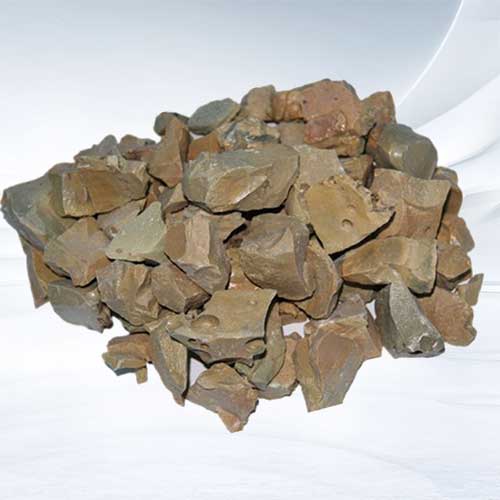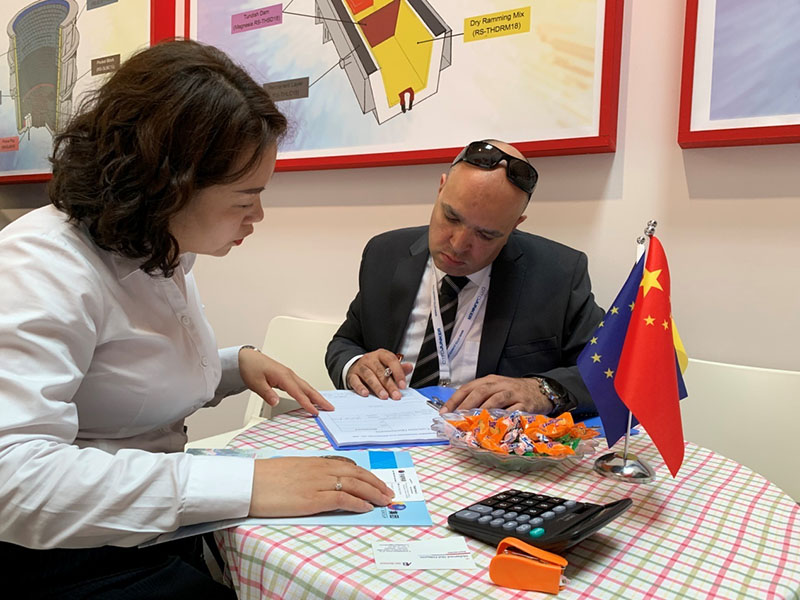
Refining Slag
1.Shortens the refining time;
2.Strong reducibility;
3.Significantly reduce power consumption.
Description
Inquiry
Related products
Description
Description of Refining Slag:The main components of the refining slag are CaAl2O4, Al2O3, SiO2, CaF2, MgO, etc. These metal ions are combined into CaO-CaF2 groups, CaO-Al2O3 groups, and CaO-Al2O3-SiO2 groups to form a composite material which is called refining slag.
Based on different forms of refining slag, there are sintered refining slag, premelted refining slag and mixed refining slag.
(1) Mixed refining slag
Mixed refining slag is a kind of refining slag that directly mixes raw materials with a certain proportion and particle size manually or mechanically, Or added to the steel-making furnace directly according to the proportion of raw materials, It has the characteristics of simple method and flexible operation, but has slow melting speed and uneven composition.
(2) Sintered refining slag
Compared with the mixed type, the sintered refining slag is more uniform and stable, and the melting speed is faster, but the cost is relatively increased, and due to the smaller density of the sinter and the larger number of pores, it is easy to cause suction in the refining process.
(3) Premelted refining slag
Premelted refining slag is the refining slag used for steel-making. After mixing raw materials in proportion, and then melt the raw materials at higher temperature than the melting point of the slag system, crush the slag after cooling, we can finally get the premelted refining slag..
Its purity is high, the chemical composition is uniform, the phase is stable, the melting point is low, and the speed of slag formation is fast. It can greatly shorten the refining time and can be directly used in the slag washing process of the converter ladle tapping process to improve the cleanliness of the molten steel.
And what is more, no fluorine or a small amount of fluorine can reduce lining erosion, effectively reduce the pollution of fluorine to the environment.
Due to the compact structure of the premelted refining slag, it does not absorb water, which is convenient for storage, transportation and storage, and also not powdered or volatile. It can significantly reduce dust pollution in iron and steel plants, but the production cost is higher.
Characteristics of Refining Slag:
(1) Rapid slag formation greatly improves the kinetic conditions of the chemical reaction in the molten pool during refining, accelerates the reduction reaction, and thus shortens the refining time.
(2) It has strong reducibility, deoxidation and desulfurization to remove harmful components in the molten steel, and has the ability to trap non-metallic inclusions in the steel, so as to achieve the purpose of smelting clean steel.
(3) It can significantly reduce power consumption, electrode consumption, refractory consumption, and the consumption of some expensive reducing agents such as aluminum, silicon-calcium alloy, etc., and can also reduce the overall production cost in the refining process to a certain extent.
Application of Refined Slag:
Put the refining slag into the ladle before tapping, because the molten steel flows into the ladle from the upper layer, it is the vigorous stirring between the molten steel and the refining slag, and the refining slag quickly melts in the molten steel, and then gathers and floats. Because of the strong reducibility of refining slag, it has a strong deoxidation and desulfurization ability, which can play the role of removing oxygen and sulfur impurities in molten steel during the mixing process of molten steel.
| Chemical component | ||||||
| Item | CaO | Al2O3 | SiO2 | TiO2 | Fe2O3 | MgO |
| 1 | 48~50 | 37~41 | 4~6 | ≤2.5 | ≤2.5 | ≤1.5 |
| 2 | 42~45 | 42~45 | 4~6 | ≤2.5 | ≤2.5 | ≤1.5 |
| 3 | 45~48 | 39~42 | 4~6 | ≤2.5 | ≤2.5 | ≤1.5 |
| 4 | 32~35 | 50~53 | 8 | ≤2.5 | ≤2.5 | ≤1.5 |
| Particle size | 0~40mm | |||||
Request For Quotation
You can get the price list and we will contact you within one working day.
+86 13526662273
Case

Our Refractory Bricks Are Exported to Egypt

GIFA 2019

Great Job Done for South Africa Customer

South Korean Customer and Indonesian Customer Visit
Are you interested in our offer?
Contact us!10th Floor, No. 6 Building, China Central Electronic CommercePort Daxue Road, Zhengzhou, Henan
Copyright @ ZHENGZHOU RONGSHENG REFRACTORY CO., LTD. All rights reserved site map/site index








